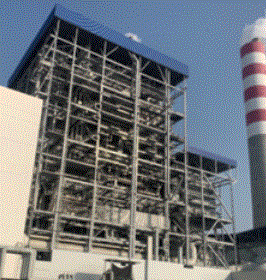-
Testing of ultra-low load coal-fired burners in China
Date posted:
-
-
-
Post Author
Greg Kelsall
-
-


660MW test boiler and side-wall sampling port
The most recent combustion related article to be published by Elsevier on 4 March 2025 can be found in the Applied Thermal Science journal. The paper entitled ‘Gas-particle flow and combustion performance of prototype and enhanced burners under minimum stable load: From laboratory to industrial scale’, looks at the role of coal-fired boilers in China to flex around the growing level of renewable power. The research assesses ‘ultra-low load burner operation down 27% rated capacity. The study made a systematic comparison of three domestically developed burners: the prototype low-NOx swirl burner (L-D), the enhanced micro-oil ignition burner (L-A), and the enhanced plasma ignition burner (LC) at boiler minimum stable load operation of 180 MWe without auxiliary fuel. A hybrid approach, combining 1:4.5 lab-scale cold-flow experiments and full-scale industrial tests on a 660 MWe wall-fired boiler was used. The key findings from the study are that:
- The recirculation zone of L-C was the longest at 0.63 nozzle diameters, with a peak reflux ratio exceeding 60% at axial positions of x/d = 0.3–0.4. Stronger axial velocity decay and radial diffusion were observed in L-A than in L-D, whereas L-C maintained a more concentrated particle distribution.
- The calculated swirl numbers were 0.584 for L-C, 0.495 for L-A, and 0.440 for L-D. Ignition distances were measured as 1.36 m for L-C, 1.47 m for L-A, and 2.39 m for LD.
- NOₓ emissions from L-C exceeded 1600 mg/m³ (6% O₂) at 1.2 m from the burner outlet, while incomplete combustion in L-A resulted in CO concentrations reaching 11,196 ppm in near-wall regions.
In summary, the integrated laboratory and industrial-scale investigation is described as bridging the experimental gap for sub-30% load operations. It establishes design-performance correlations to be able to provide ‘deep peak-shaving’ retrofits of coal-fired boilers to flex around non-despatchable energy generation.
